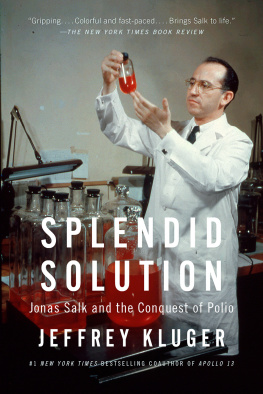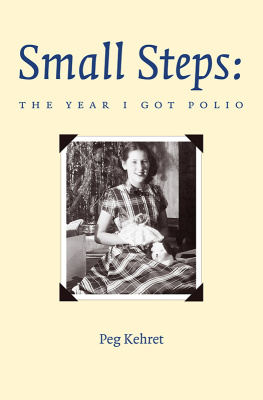Naomi Rogers - Polio Wars: Sister Kenny and the Golden Age of American Medicine
Here you can read online Naomi Rogers - Polio Wars: Sister Kenny and the Golden Age of American Medicine full text of the book (entire story) in english for free. Download pdf and epub, get meaning, cover and reviews about this ebook. year: 2013, publisher: Oxford University Press, USA, genre: Politics. Description of the work, (preface) as well as reviews are available. Best literature library LitArk.com created for fans of good reading and offers a wide selection of genres:
Romance novel
Science fiction
Adventure
Detective
Science
History
Home and family
Prose
Art
Politics
Computer
Non-fiction
Religion
Business
Children
Humor
Choose a favorite category and find really read worthwhile books. Enjoy immersion in the world of imagination, feel the emotions of the characters or learn something new for yourself, make an fascinating discovery.

- Book:Polio Wars: Sister Kenny and the Golden Age of American Medicine
- Author:
- Publisher:Oxford University Press, USA
- Genre:
- Year:2013
- Rating:5 / 5
- Favourites:Add to favourites
- Your mark:
Polio Wars: Sister Kenny and the Golden Age of American Medicine: summary, description and annotation
We offer to read an annotation, description, summary or preface (depends on what the author of the book "Polio Wars: Sister Kenny and the Golden Age of American Medicine" wrote himself). If you haven't found the necessary information about the book — write in the comments, we will try to find it.
Polio Wars is the story of Sister Elizabeth Kenny -- Sister being a reference to her status as a senior nurse, not a religious designation -- who arrived in the US from Australia in 1940 espousing an unorthodox approach to the treatment of polio. Kenny approached the disease as a non-neurological affliction, championing such novel therapies as hot packs and muscle exercises in place of splinting, surgery, and immobilization. Her care embodied a different style of clinical practice, one of optimistic, patient-centered treatments that gave hope to desperate patients and families.
The Kenny method, initially dismissed by the US medical establishment, gained overwhelming support over the ensuing decade, including the endorsement of the National Foundation for Infantile Paralysis (todays March of Dimes), Americas largest disease philanthropy. By 1952, a Gallup Poll identified Sister Kenny as most admired woman in America, and she went on to serve as an expert witness at Congressional hearings on scientific research, a foundation director, and the subject of a Hollywood film. Kenny breached professional and social mores, crafting a public persona that blended Florence Nightingale and Marie Curie.
By the 1980s, following the discovery of the Salk and Sabin vaccines and the March of Dimes withdrawal from polio research, most Americans had forgotten polio, its therapies, and Sister Kenny. In examining this historical arc and the publics process of forgetting, Naomi Rogers presents Kenny as someone worth remembering. Polio Wars recalls both the passion and the practices of clinical care and explores them in their own terms.
Naomi Rogers: author's other books
Who wrote Polio Wars: Sister Kenny and the Golden Age of American Medicine? Find out the surname, the name of the author of the book and a list of all author's works by series.







